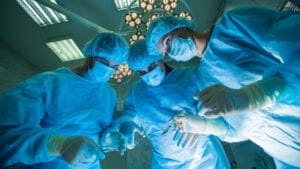Snapping selfies and social media have changed life as we know it. Now, it’s changing the cosmetic surgery industry as we know it.
“Social media is causing people to take a close-up look at themselves,” said Pablo Prichard, M.D., senior partner at Advanced Aesthetic Associates and chief of plastic surgery at John C. Lincoln Hospital. “I’ve seen a trend of younger and younger patients over the last five years and a lot of that can be attributed to the impact of social media.”
Prichard said young people who are looking to raise their profile on image-based platforms like Instagram and Snapchat are coming in primarily for rhinoplasty, chin augmentation, lip augmentation and breast augmentation.
“People come in and will manipulate their facial features with smartphone applications and will actually come in with images of how they would like to look,” said Dr. Daniel Shapiro of Shapiro Aesthetic Plastic Surgery and Skin Klinic in Scottsdale.
Shapiro said social media, LinkedIn and dating websites make it difficult to escape viewing a steady stream of images of yourself, which makes it easier to analyze flaws and imperfections. As a result, Shapiro has seen a 15 percent increase in patients because of selfie obsession.
“During the Recession, I saw a lot of people who were laid off and came in to invest in their appearance,” Shapiro said. “Now, people going through horrible divorces see themselves in selfies, see how much older they look and all of a sudden they have to be out there (and want to improve their appearance).”
After cosmetic surgery, Shapiro has seen many patients find significant other “pretty quickly” on sites like match.com and eHarmony. But even with those successes, Shapiro said the public needs to put things into perspective and avoid becoming obsessed with selfies.
“I think the obsession with social media is here to stay,” Shapiro said. “And I think it’s going to get even more and more popular.”




